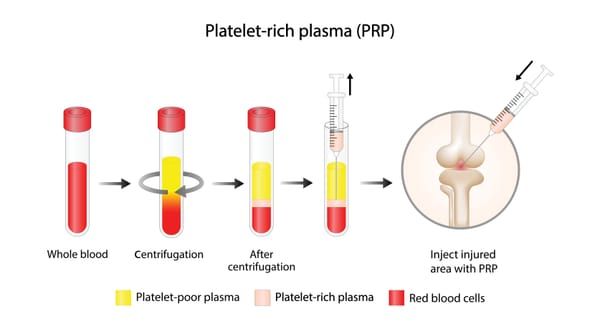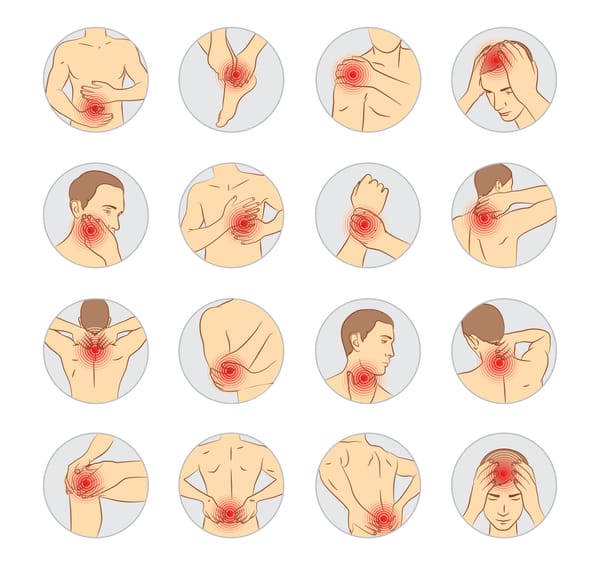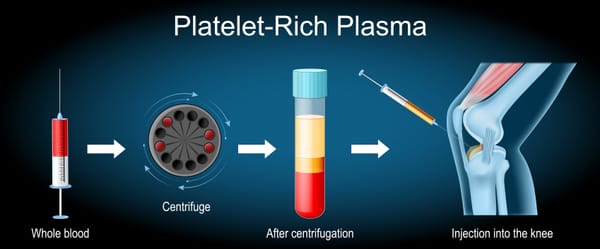Sacroiliac Joint Instability: A Hidden Cause of Lower Back and Pelvic Pain

Lower back pain is a widespread issue, but for some, the source of discomfort lies in the sacroiliac (SI) joint, a critical yet often overlooked structure. Sacroiliac joint instability can lead to persistent pain in the lower back, pelvis, or buttocks, making everyday activities like sitting, walking, or climbing stairs challenging.
Understanding this condition is essential for finding effective relief and improving quality of life. In this blog post, we’ll explore what sacroiliac joint instability is, how it causes pain, its symptoms, causes, and treatment options, all explained clearly for a general audience.
What is Sacroiliac Joint Instability?
The sacroiliac (SI) joints connect the sacrum—the triangular bone at the base of the spine—to the iliac bones of the pelvis on either side. These joints are designed for stability, supporting the body’s weight while allowing slight movement to accommodate walking, bending, or twisting. SI joint instability occurs when the joint becomes too loose (hypermobility) or too stiff (hypomobility), disrupting its normal function.
- Hypermobility: Weak or overstretched ligaments allow excessive movement, leading to joint irritation or misalignment.
- Hypomobility: Stiffness causes compensatory stress on surrounding tissues, contributing to pain.
This instability can inflame the joint, irritate nearby nerves, or strain muscles, resulting in sacroiliac joint pain or lower back pain. SI joint dysfunction is estimated to cause 10-25% of chronic lower back pain cases, per a 2020 study in Pain Physician, and is often mistaken for other spinal conditions like disc herniation.
How SI Joint Instability Causes Pain
The SI joint is stabilized by strong ligaments and supported by muscles like the gluteals, core, and hip flexors. Instability disrupts this balance, leading to:
- Joint Irritation: Excessive or restricted movement causes inflammation in the joint, triggering localized pain.
- Nerve Irritation: Misalignment or inflammation can compress nearby nerves, causing radiating pain to the buttocks, groin, or thighs.
- Muscle Overcompensation: Weak or unstable joints force muscles (e.g., piriformis or hamstrings) to overwork, leading to spasms or soreness.
- Referred Pain: Pain may spread to the lower back or hips, mimicking other conditions like sciatica or lumbar arthritis.
The pain is typically felt in the lower back, pelvis, or buttocks, often on one side, and can vary from a dull ache to sharp discomfort.Causes of Sacroiliac Joint InstabilitySI joint instability can result from various factors that disrupt the joint’s stability or function:
- Trauma: Falls, car accidents, or heavy lifting can stretch or tear SI joint ligaments, leading to hypermobility.
- Pregnancy and Childbirth: Hormones like relaxin loosen ligaments, and childbirth can strain the pelvis, causing instability.
- Repetitive Stress: Activities like running, golfing, or prolonged sitting can overload the SI joint.
- Arthritis: Osteoarthritis or inflammatory conditions like ankylosing spondylitis can inflame or stiffen the joint.
- Ligament Laxity: Conditions like Ehlers-Danlos syndrome or prior surgeries (e.g., lumbar fusion) can weaken ligaments.
- Muscle Imbalance: Weak core, gluteal, or hip muscles fail to support the joint, contributing to instability.
- Structural Issues: Leg length discrepancies, scoliosis, or pelvic asymmetry can unevenly stress the SI joint.
Women are more susceptible due to wider pelvic anatomy and hormonal changes, per a 2019 study in Journal of Orthopaedic & Sports Physical Therapy.
Symptoms of SI Joint Instability
SI joint instability presents with distinct symptoms, though they often overlap with other back conditions:
- Lower Back or Pelvic Pain: Aching or sharp pain in the lower back, buttocks, or pelvis, typically one-sided.
- Radiating Pain: Discomfort may extend to the groin, hips, or upper thighs, rarely past the knee (unlike sciatica).
- Instability or Weakness: A sensation of the pelvis “giving way” or difficulty with transitions (e.g., standing from a chair).
- Pain Triggers: Worsened by prolonged sitting, standing, walking, climbing stairs, or twisting movements.
- Relief with Position Changes: Pain often eases when lying down, shifting positions, or avoiding aggravating activities.
The Fortin finger test—pointing to pain just below the lower back near the SI joint—can help identify SI-related pain.
Diagnosing SI Joint Instability
Diagnosing SI joint instability is challenging due to its similarity to other conditions (e.g., lumbar disc issues, facet joint pain). A comprehensive evaluation includes:
- Medical History: Reviewing pain patterns, triggers, and history of trauma, pregnancy, or arthritis.
- Physical Exam: Tests like the FABER (Patrick’s) test, SI joint compression, thigh thrust, or Gaenslen’s test to provoke pain and assess joint mobility.
- Imaging:
- X-rays: To detect arthritis, bone spurs, or structural issues.
- MRI or CT: To rule out disc herniation, tumors, or other causes.
- Ultrasound: To evaluate soft tissues or inflammation.
- Diagnostic Injections: Fluoroscopy- or ultrasound-guided injections of anesthetic into the SI joint. Pain relief confirms the joint as the pain source.
A 2021 study in Pain Medicine found that combining physical tests with diagnostic injections improves diagnostic accuracy for SI joint pain by 80-90%.
Treatment Options for SI Joint Instability
Treatment focuses on stabilizing the joint, reducing pain, and improving function, starting with conservative approaches and progressing as needed.
1. Conservative Treatments
- Physical Therapy: Strengthening core, gluteal, and hip muscles to support the SI joint, along with stretches to improve mobility. Pelvic stabilization exercises are critical.
- SI Joint Belt: A supportive belt worn around the pelvis to stabilize the joint, especially during pregnancy or early recovery.
- Medications:
- NSAIDs (e.g., ibuprofen) for inflammation and pain.
- Muscle relaxants for spasms.
- Neuropathic drugs (e.g., gabapentin) for nerve-related pain.
- Lifestyle Changes: Weight management, ergonomic adjustments (e.g., proper seating), and avoiding activities like heavy lifting or repetitive twisting.
2. Interventional Procedures
- Corticosteroid Injections: Ultrasound- or fluoroscopy-guided injections to reduce inflammation in the SI joint. A 2020 study in Pain Physician found 60-70% of patients had relief for 1-3 months.
- Radiofrequency Ablation (RFA): Disrupts pain-transmitting nerves around the SI joint using heat, offering relief for 6-12 months, per a 2019 study in Journal of Pain Research.
- Prolotherapy: Injections of dextrose to stimulate ligament repair, though evidence is limited and less commonly used.
3. Surgical Treatments
- SI Joint Fusion: For severe, persistent instability, minimally invasive fusion stabilizes the joint using screws or implants. A 2021 study in The Spine Journal found 70-80% of patients had significant pain reduction at 1 year.
- Surgery is typically a last resort, needed in less than 10% of cases after conservative treatments fail.
4. Complementary Therapies
- Chiropractic Care: Gentle adjustments to improve alignment, with caution to avoid overstressing the joint.
- Acupuncture: May reduce pain perception, with some studies showing benefits for SI joint pain.
- Psychological Support: Cognitive-behavioral therapy or mindfulness to address chronic pain’s emotional impact.
A 2020 review in Global Spine Journal found that 60-70% of patients with SI joint instability improve with conservative treatments, while interventional or surgical options benefit those with persistent symptoms.
Living with SI Joint Instability
SI joint instability can disrupt daily life, making sitting, standing, or moving uncomfortable. Keep a pain diary to track symptoms and triggers, and communicate openly with your healthcare team to tailor treatment. Support groups, through organizations like Spine-Health (spine-health.com) or the American Academy of Orthopaedic Surgeons (aaos.org), or online platforms like Reddit, offer a space to connect with others and share coping strategies.
Emotional support is vital, as chronic pain can lead to frustration or depression. Lean on counselors, family, or friends for encouragement. Practical steps, like using an SI joint belt, alternating positions, or practicing pelvic stabilization exercises, can help manage symptoms.
Why Awareness Matters
SI joint dysfunction accounts for 10-25% of chronic lower back pain cases, yet it’s frequently misdiagnosed as lumbar disc or facet joint issues, per a 2019 study in Journal of Orthopaedic & Sports Physical Therapy. Raising awareness ensures patients receive accurate diagnoses and targeted treatments, preventing prolonged discomfort.
If you’re experiencing lower back, pelvic, or buttock pain, particularly with activity, consult a spine specialist, orthopedist, or pain management doctor about whether SI joint instability could be the cause. Resources like Spine-Health or the International Society for the Advancement of Spine Surgery (isass.org) offer valuable information and support.
By understanding sacroiliac joint instability, we can empower those affected to seek relief and reclaim their mobility. Let’s keep the conversation going—no one should face this pain alone.
Disclaimer: This blog post is for informational purposes only and not a substitute for professional medical advice. Consult a healthcare provider for diagnosis and treatment of sacroiliac joint instability or related pain.



